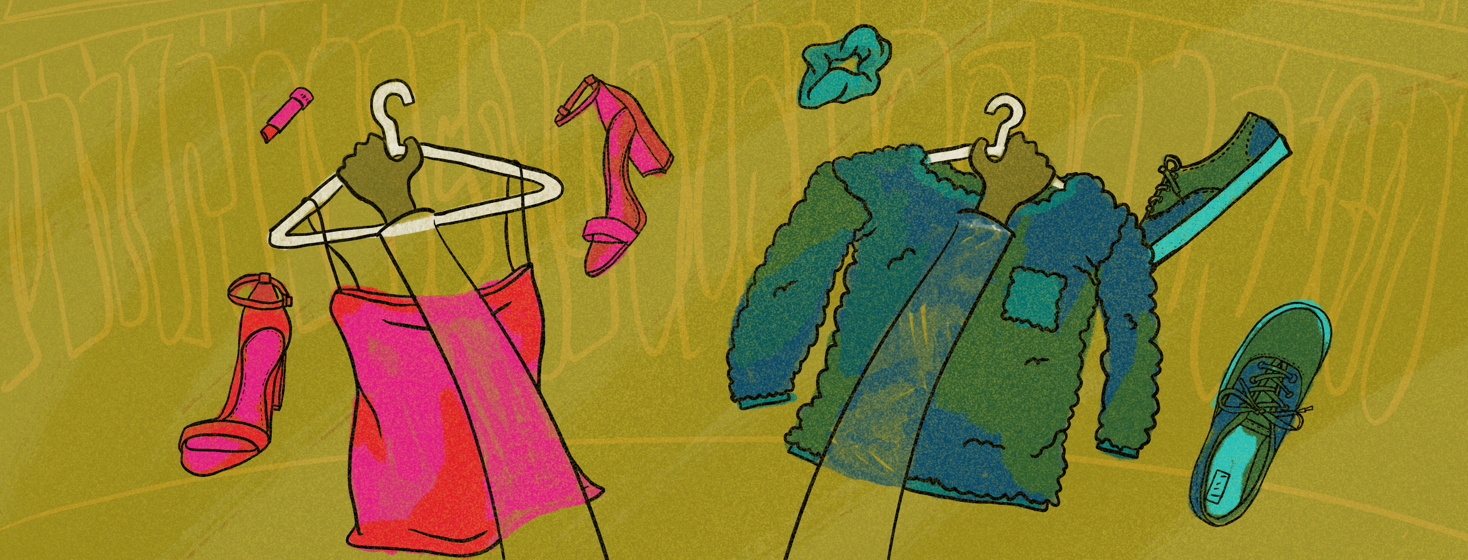How Lupus Made Me Fall in Love with Thrift Shopping
When I was at my sickest with lupus cerebritis, my mother-in-law, who had moved in to take care of me, introduced me to thrifting. My Other Mother, as I call her, loves thrift store shopping the way most people love ice cream or days off of work. An avid bargainer, My Other Mother always knows where to find the best prices and what stores are having sales when.
Lupus flares and shopping
After my lupus cerebritis flare, I was unable to walk for nearly a year. I rarely left my bed aside from weekly doctors’ appointments. Every few weeks, My Other Mother would suggest a change of scenery. She’d load my wheelchair into the back of her car. Then she would buckle me into the passenger seat and we would head to the nearest Goodwill.
My Other Mother would push my chair down the aisles as I rifled through racks of clothes. She’d pile dresses, shirts, and pants onto my lap until the pile of clothes spilled over the chair’s armrests. We’d browse housewares, looking at gilded picture frames and wicker baskets. Often, we’d leave with a trunkful of items that cost us only around $20.
After I recovered and My Other Mother moved back into her own home, we would still meet up every few months to thrift. She liked to joke that with no wheelchair in the trunk, we could bring home even more treasures.
Thrift shopping with a chronic illness
My favorite part of thrifting is the surprise of never knowing what you will find. The occasional designer dress is hidden among other clothes on the rack. Adorable coffee mugs and elegant glass vases crowd the shelves between the aisles. New York Times bestsellers are hidden gems on the bookshelves, waiting to be picked up and read.
Thrift shopping is also a great option for anyone with a chronic illness. Often, our diseases can limit how many hours we work, which means we have less income to spend on clothes or housewares. In addition, we frequently have sizable medical bills that eat into our paychecks. By shopping at thrift stores, you can save money in a way that’s environmentally sustainable; many of the items you buy would have ended up in a landfill otherwise. Most shirts or dresses at thrift stores cost between $7 and $12 dollars, which is considerably less than what you might spend at a regular clothing store – not to mention, you can often find clothing items with the tags still attached from when they were originally purchased. Because of the steroids I take to manage my disease, I frequently gain or lose weight. By shopping for clothes at thrift stores, I can afford a new wardrobe every time lupus throws me a curveball.
About one Wednesday a month (Goodwill Teacher Discount Days!), I visit the handful of thrift stores near my home. I bought a house this year, and 90 percent of my furniture and decor was thrifted from resale shops, Goodwill, or Facebook Marketplace. These days, my wheelchair gathers dust inside my parents’ attic. However, my love of thrifting will probably always be with me.

Join the conversation